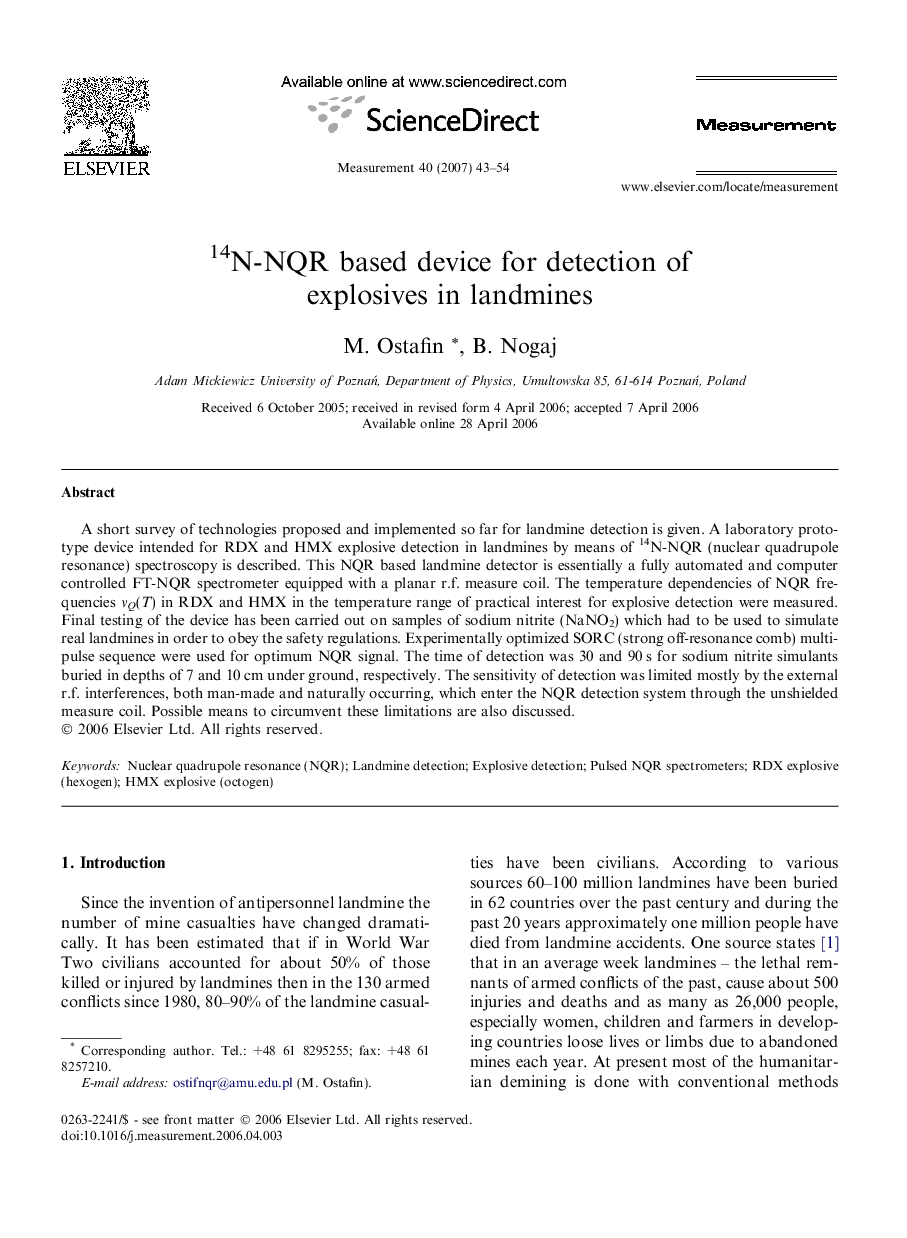| Article ID | Journal | Published Year | Pages | File Type |
|---|---|---|---|---|
| 730738 | Measurement | 2007 | 12 Pages |
A short survey of technologies proposed and implemented so far for landmine detection is given. A laboratory prototype device intended for RDX and HMX explosive detection in landmines by means of 14N-NQR (nuclear quadrupole resonance) spectroscopy is described. This NQR based landmine detector is essentially a fully automated and computer controlled FT-NQR spectrometer equipped with a planar r.f. measure coil. The temperature dependencies of NQR frequencies νQ(T) in RDX and HMX in the temperature range of practical interest for explosive detection were measured. Final testing of the device has been carried out on samples of sodium nitrite (NaNO2) which had to be used to simulate real landmines in order to obey the safety regulations. Experimentally optimized SORC (strong off-resonance comb) multi-pulse sequence were used for optimum NQR signal. The time of detection was 30 and 90 s for sodium nitrite simulants buried in depths of 7 and 10 cm under ground, respectively. The sensitivity of detection was limited mostly by the external r.f. interferences, both man-made and naturally occurring, which enter the NQR detection system through the unshielded measure coil. Possible means to circumvent these limitations are also discussed.
